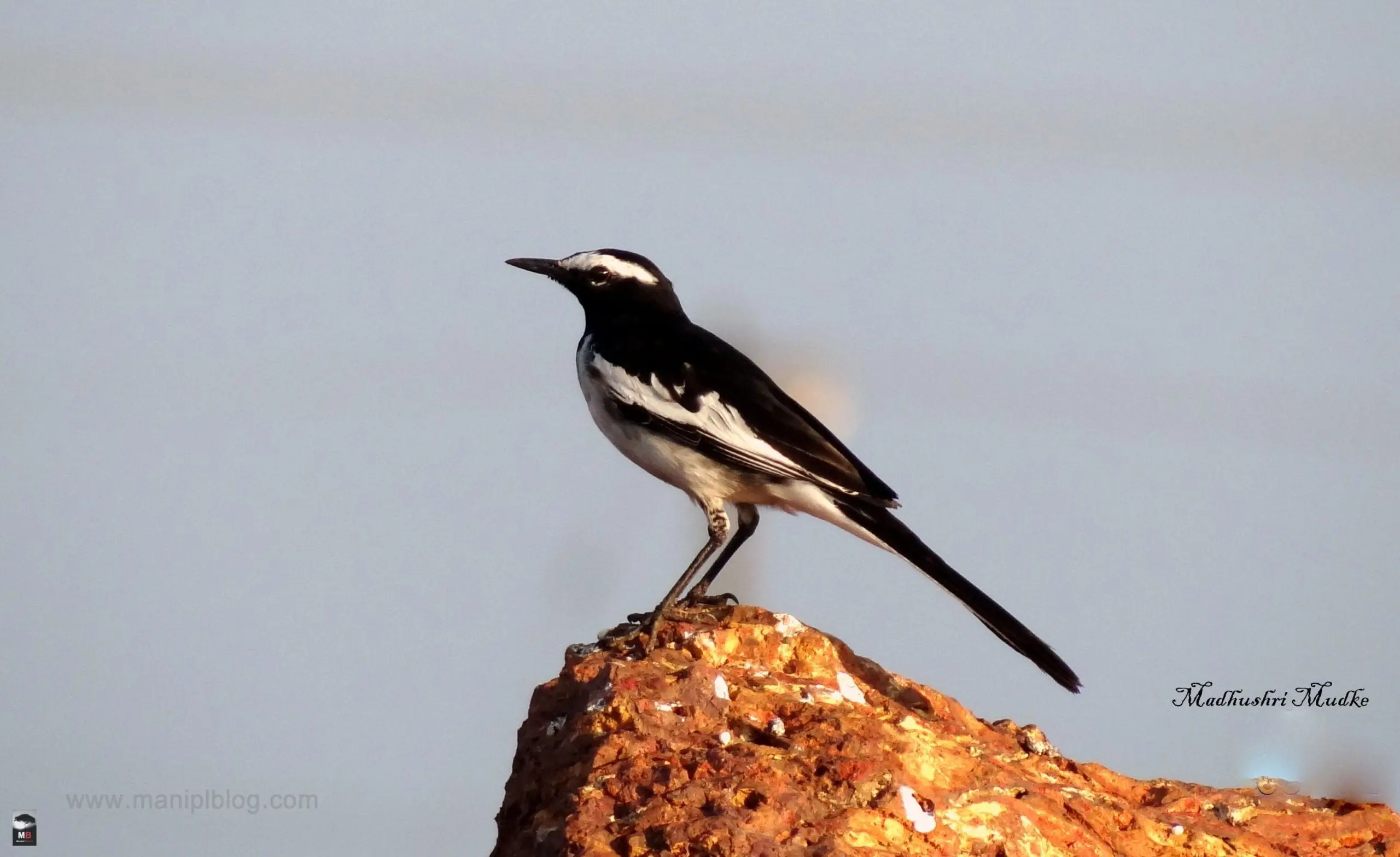

Wagtails are wonderful small, not very small, medium-sized birds which are named so because of continuous waggling of their tail. They are slightly pale less colored birds unlike other bright and vibrant ones. What makes them super cute is the distinctive wagging tail as they perch. The tail goes up and down, up and down, up and down many times and is faster than you can read this at your fastest, try it! 😛
These birds often stay in flocks of 6-8 or more or sometimes less but are happy alone as well. The Large White Wagtail or the White Browed Wagtail (Motacilla maderaspatensis) is one of the common varieties of wagtails found in India. The prominent white eye brow gives the bird a very beautiful feminine look. 😉 These are those little black and white long-tailed sweet singers that you may come across while you are walking around in Manipal enjoying the wonderful climate or simply strolling in the company of loved ones. 😉 Take your eyes off your love!

An old book on Indian birds said that the native Indians had known Wagtails by the name of “Dhobin”. The funny story behind this is the comparison of the bird with the wives of miscreants who batters clothes and the fondness of the bird towards water.
The Pied Wagtail (Motacilla alba) is a winter guest in Manipal. I wonder how these guests feel watching the rapid destruction of their habitat. This white wagtail is small and adorable. The beautiful gait and tail wagging add to the cuteness. These are not uncommon on chilly winter mornings when one goes for walk at End Point Park or to witness them on the foot-ball grounds. You may even come across a few at the Edu building lawns once the office is closed and parking vacant.

The wagtail is sometimes called the song bird or perching bird. It sings chissik-chissik when perched or when in flight and wags its tail. They mainly feed on flies and other non flying insects like worms and caterpillars on the ground. A large number of birds gather on the islands and edges of Manipal Lake. It’s wonderful to hear them and watch them play in the golden setting sun. These birds usually make small cup-shaped nests around water on the ground or sometimes in man-made holes and between rocks.
Another exquisite little wagtail may be witnessed near flowing water streams although it is a rare bird in Manipal. It is fragile, beautiful, slender, long tailed singer called the Grey Wagtail (Motacilla cinerea). It’s slightly more yellow than grey when one sees it for the first time. You might wonder why it is named Grey Wagtail when it is yellow but it’s greyer than another variety, the Yellow Wagtail (Motacilla flava). So there you get the answer!
Happy birding! 🙂

Be the first to comment